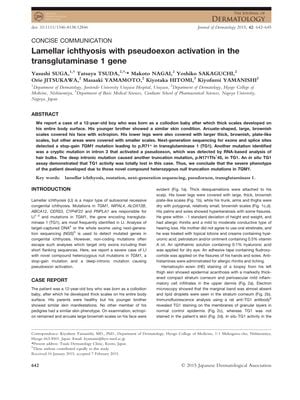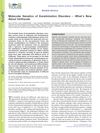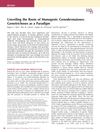Lamellar Ichthyosis with Pseudoexon Activation in the Transglutaminase 1 Gene
March 2015
in “
Journal of dermatology
”

TLDR The boy's severe skin disorder is caused by two new mutations in his TGM1 gene.
The document describes a study of a 12-year-old boy with severe lamellar ichthyosis (LI), a genetic skin disorder, who had a history of being born as a collodion baby and developed extensive scaling. His younger brother also showed similar symptoms. Researchers used next-generation sequencing to discover two mutations in the transglutaminase 1 (TGM1) gene: a stop-gain mutation leading to a p.R71* mutation and a deep intronic mutation causing pseudoexon activation and a p.N171Tfs*45 truncation mutation. An assay confirmed the absence of transglutaminase 1 activity in the patient's skin. The study concluded that the patient's severe LI was due to these novel compound heterozygous null truncation mutations in the TGM1 gene, emphasizing the need to include non-coding regions in genetic testing for accurate molecular diagnosis.



